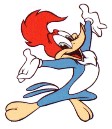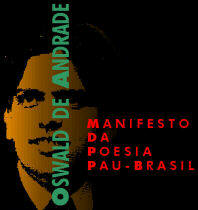Works - Choros
| February 14, 2008: See this Villa-Lobos Magazine post on a new Choros series coming from BIS. | ||||||||||||||||||||||||||||||||
|
In his article "Redating the Choros of Villa-Lobos", Luis Fernando Lopes suggests that a number of the works in the Choros series - #6, 9, 11, and 12 - were not written in the modernist period of the 1920s, but in the nationalistic period of the 30s and early 40s. Lopes also feels that the lost Choros scores #13 and #14 "... likely never progressed beyond a couple of surviving excerpts and verbal descriptions..." In any case, this series contains some of Villa-Lobos's greatest works.
|
||||||||||||||||||||||||||||||||
No. 1 for guitar (1920) - Max Eschig
|
||||||||||||||||||||||||||||||||
No. 2 for flute & clarinet (1924) - Max EschigEero Tarasti brings up the possibility of the influence of Edgard Varese, a close friend of Villa-Lobos' during his stay in Paris. Other European influences that come up in Tarasti's analysis (p. 91-95 of his Heitor Villa-Lobos, 1995) are Debussy and Stravinsky.
|
||||||||||||||||||||||||||||||||
No. 3 for male chorus & wind instruments (1925) - Max Eschig
"Dedicated to the sonorous atmospher of the primitive music of the aborigines of the states of Matto Grosso and Goias." - HVL
One of the themes is borrowed from an Indian song melody, a drinking song of the Parecis Indians. As Villa-Lobos scholar Gerard Behague points out, this is a rare case of Villa-Lobos using an actual Indian song in one of his pieces. Instrumentation:
|
||||||||||||||||||||||||||||||||
No. 4 for 3 horns & trombone (1926) - Max EschigA work that definitely enriches the world's literature for 3 horns and trombone.... 'It is perhaps, among the Choros, the most meaningful for its form and significance.'' - Villa-Lobos, quoted in Augusto, Antonio, "The Brazilian Repertoire for Horn," The Horn Call - Journal of the International Horn Society 28:2 (February 1998) p. 23-27
|
||||||||||||||||||||||||||||||||
No. 5 for piano (1925) "Alma Brasileira" - Max EschigDedicated to Villa-Lobos' benefactor Arnaldo Guinle.
|
||||||||||||||||||||||||||||||||
No. 6 for orchestra (1926) - Max EschigOrchestration:
|
||||||||||||||||||||||||||||||||
No. 7 for winds, violin & cello (1924) - Max Eschig
Orchestration:
|
||||||||||||||||||||||||||||||||
|
No. 8 for large orchestra & 2 pianos (1925)
Orchestration:
|
||||||||||||||||||||||||||||||||
No. 9 for orchestra (1929) - Max Eschig
Piccolo, 2 flutes, 2 oboes, eng horn, 3 clarinets, bass clarinet, 2 bassoons, contrabassoon, 4 horns, Dedicated to Arminda Noves d'Almeida in 1936 Premiere: Rio de Janeiro, Orchestra of the Teatro Municipal; Villa- Lobos, cond; 7/15/1942 |
||||||||||||||||||||||||||||||||
No. 10 for chorus & orchestra (1925) "Rasga o Coraçao" - Max Eschig
Villa-Lobos' greatest work?
Orchestration:
|
||||||||||||||||||||||||||||||||
No. 11 for piano & orchestra (1928) - Max EschigOrchestration:
A new recording of the Choros no. 11 has just been released by Ondine - ODE 916-2. Pianist Ralf Gothoni (piano) and the Finnish RSO conducted by Sakari Oramo have received rave reviews (here's one from the rec.music.classical.recordings newsgroup by Harold Lewis.) Until now the standard recording came from the famous May 1958 sessions in Paris, with the composer conducting the Orchestre National de la Radiodiffusion Française. |
||||||||||||||||||||||||||||||||
No. 12 for orchestra (1929) - Max EschigComposed in Rio in 1929 (or later - see the note at the top of this page), the work was premiered by the Boston Symphony in 1945. There's a good modern recording,by the Liège Philharmonic Orchestra, conducted by Pierre Bartholomée (recorded in 1980, released on CD by Cyprès CYP1623 in 1999). Read this excellent review by Peter J. Rabinowitch on Andante.com, which starts off as a put-down of the work, but ends in real appreciation:
Orchestration:
|
||||||||||||||||||||||||||||||||
No. 13 for 2 orchestras & band (1929)- Score Lost |
||||||||||||||||||||||||||||||||
|
No. 14 for orchestra, band & chorus (1928) - Score Lost
|
||||||||||||||||||||||||||||||||
Choros bis, for violin & cello (1928) |
||||||||||||||||||||||||||||||||
Introduction aux Choros for orchestra & guitar (1929) - Max EschigInstrumentation:
|
1 The bird-song is from the marvellous site Songs of Brazilian Birds, on the Ministério do Meio Ambiente, dos Recursos Hídricos e da Amazônia Legal website. There are two bird-song pages on the site - the English one linked above, and one in Portuguese. The Portuguese version might actually be of more interest to English-speaking Villa-Lobos lovers, since the Portuguese names of the birds were used so often by Villa-Lobos: besides the Araponga-de-barbelas, there are the Pica-pau, the Papagaio, the Surucua, and the Uirapuru - all the subjects of music by Villa-Lobos. Look for a feature coming soon to the Heitor Villa-Lobos Website: Birdsong in the Music of Villa-Lobos.




